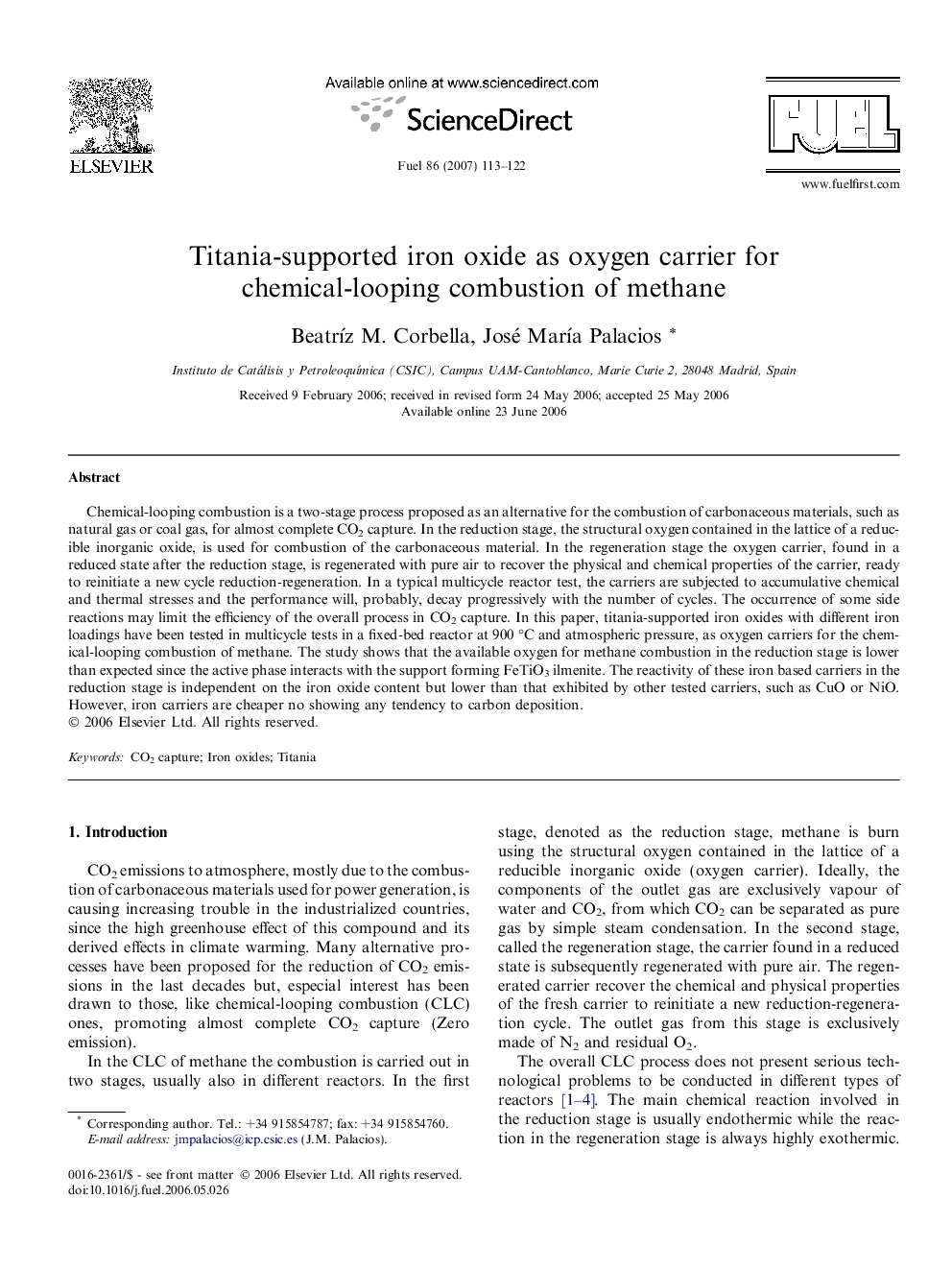| Article ID | Journal | Published Year | Pages | File Type |
|---|---|---|---|---|
| 208277 | Fuel | 2007 | 10 Pages |
Chemical-looping combustion is a two-stage process proposed as an alternative for the combustion of carbonaceous materials, such as natural gas or coal gas, for almost complete CO2 capture. In the reduction stage, the structural oxygen contained in the lattice of a reducible inorganic oxide, is used for combustion of the carbonaceous material. In the regeneration stage the oxygen carrier, found in a reduced state after the reduction stage, is regenerated with pure air to recover the physical and chemical properties of the carrier, ready to reinitiate a new cycle reduction-regeneration. In a typical multicycle reactor test, the carriers are subjected to accumulative chemical and thermal stresses and the performance will, probably, decay progressively with the number of cycles. The occurrence of some side reactions may limit the efficiency of the overall process in CO2 capture. In this paper, titania-supported iron oxides with different iron loadings have been tested in multicycle tests in a fixed-bed reactor at 900 °C and atmospheric pressure, as oxygen carriers for the chemical-looping combustion of methane. The study shows that the available oxygen for methane combustion in the reduction stage is lower than expected since the active phase interacts with the support forming FeTiO3 ilmenite. The reactivity of these iron based carriers in the reduction stage is independent on the iron oxide content but lower than that exhibited by other tested carriers, such as CuO or NiO. However, iron carriers are cheaper no showing any tendency to carbon deposition.
